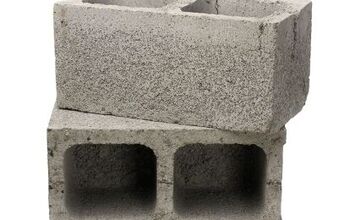How Much Does A House Weigh?

Knowing the weight of a home can be a valuable tool in planning the overall construction. It is also essential knowledge to be aware of if you’re planning on moving an entire house.
Being aware of the average weight of a home also helps you have a better understanding of the weight that is borne on the soil under the foundation and reduce the risk of harmful effects on your yard caused by a home that is too heavy.
The average weight of a house is between 80,000 and 160,000 pounds. This depends on the house’s square footing, material used for the infrastructure, and internal contents. As a rule of thumb, you should count 200 pounds per square foot times 2,000 feet to calculate the weight of an individual home.
Let’s dive in further and answer the fundamental question at hand: “How much does a house weigh?”
Determining the Weight of a House
The first step in determining the weight of a house is defining what is exactly included in the term “house.” However, in general, the average house in today’s society is around twice as large as homes 50 or more years ago.
Depending on the age of an older home, they generally contain solid lumber wall sheathing and floorboards as opposed to plywood. They also have plaster and hefty lath walls instead of plywood and most likely consist of more masonry work.
In this case, when we use the term “house” are we factoring in the enormously heavy concrete foundation, garage, basement level and the interior contents? With all of these variables, there are typically two methods to determine how much a house weighs.
- Following general construction industry rules of thumb
- Adding up the weight of all of the home’s individual components
Construction Rules of Thumb
In general, there will be a significant weight variation based on the materials and method used in the construction of a house. For instance, homes that feature concrete or tile roofing will weigh much more than a similar home with composition shingle roofing.
Regardless, the general rules of thumb surrounding the construction industry are that a single-level home weighs roughly 200 pounds per square foot. A home with two levels weighs 275 pounds a square foot and 350 pounds per square foot for three levels.
These numbers do not include any possible heavier features of the home such as roofing, or extensive masonry work. However, they do factor in the weight of a concrete foundation.
Using Load Study
Another way to measure the weight of a house is to implement a method called “load study.” This can be a tedious process but involves adding up all of the home’s individual components.
To begin, you’ll want to take measurements of the full structure to determine the home’s square footage. Then, calculate the weight of all the materials in the structure. For example, how much foundation or concrete slabs per cubic yard, how much walls, ceilings per square foot etc.
For ease, you can reference online engineering tables that often list the general weight of the most common building materials. Once you’ve figured out the total weight of all of the materials used in the home’s construction, you can go a step further and add in the weight of household contents.
The Contents of a Home
If you’re interested in finding out the exact total weight of a home, everything included, you also need to consider the home’s contents. There is a substantial amount of weight in a home from furniture, appliances and personal belongings.
Just like anything, the weight of a household’s contents will vary from household to household. Some items such as pianos or fireproof filing cabinets can weigh as much as 1,400 pounds. The number will also be much higher if a homeowner has features such as a home gym or a personal library.
In order to calculate the weight of the contents of your home you need to multiply the number of full-sized rooms by 1,000 pounds each. Examine this hypothetical situation for further explanation:
- A home that contains seven rooms total
- Four bedrooms, one living room, one dining room, one kitchen
- Multiply the total number of rooms (7) by 1,000 pounds
- The total weight of the contents of this home: 7,000 pounds
Determining a Home’s Square Footage
Since the rules of thumb for a house’s weight are established per square foot, you need to know the total square footage of your home. Using this number, you can more accurately determine the home’s weight.
If you live in a home with a very basic rectangle floor plan, you can simply measure the width and length and then multiply these two numbers together. For example, if a one-story structure is 80 feet by 60 feet long, the square footage is 4,800 (80 x 60 = 4,800).
However, more often than not, a home’s floor plan will be much more complex than a perfect rectangle. In this case, you should follow these steps for measuring the square footage of your home:
- Sketch a rough outline of your entire home. Notate all of the rooms that you’ll need to measure including hallways and any other non-room areas as their own “room” for simplicities sake.
- Using a tape measure, calculate the width and length, in feet, of each room.
- Multiply the width by the length for each room and mark the resulting square footage in the relevant space on your sketch.
- Add up the square footage of each of the room. The subsequent number will be your home’s total square footage.
If this seems like it may be too complicated a process for your individual situation, consider hiring a professional appraiser. You will be charged based on the size of your property and could end up paying as little as $100 and up to several hundred dollars.
Calculating the Total Weight of an Individual Home
Now that you have a general understanding of the various individual components involved in calculating a home’s weight, let’s add it all together.
Imagine that we’re trying to determine the weight of a 2,000 square foot, one-story home. The construction rules of thumb maintain that a one-story house weighs around 200 pounds per square foot, including the weight of a concrete slab foundation. The calculations are as follows:
200 pounds per square foot x 2,000 square feet
Weight of the house and the foundation = 400,000 pounds
While the weight of this house and its foundation are 400,000 pounds, this does not include the home’s contents. As previously stated, in order to determine the weight of the home’s furniture, appliances etc. you need to multiply the total number of full rooms by 1,000 pounds. For the sake of this example, let’s say that our 2,000 square foot home has 6 full size rooms.
6 full size rooms x 1,000 pounds
Weight of the home’s contents = 6,000 pounds
To achieve the total weight of this house, foundation and contents included, simply add up the previously calculated numbers.
Weight of the house and foundation + weight of the home’s contents
400,000 pounds + 6,000 pounds
Total weight = 406,000 pounds
Understanding Factor of Safety
The total weight of our hypothetical home, 406,000 pounds, is over 200 tons. After all of these calculations, why might someone need to know the weight of their house? If it’s not because you’re planning to physically move your house, it may be because you need to perform some repairs on your foundation.
The phrase “factor of safety” is an engineering term that describes the amount of weight a support structure can tolerate. If you need to repair your foundation, there are two most popular options: concrete-push piles or bell-bottom pier repair. Though cheaper and more common, pushed piles have a factor of safety of 1, meaning any increase in load can cause failure.
Whereas, bell bottom piles have a factory of safety that is 5 to 10, indicating that they have the ability to bear much more weight.
Relevant Questions
To be considered a “tiny home,” the structure must be less than 500 square feet. In this case, the majority of tiny homes weigh in at around 8,000 to 12,000 pounds. However, this does not include the household contents. This will vary from home to home but, in general, you can expect the contents to equal between 2,000 and 3,000 pounds. Factoring this in brings the total weight of a tiny home to anywhere from 10,000 to 15,000 pounds.
How much does a mobile home weigh?The weight of a mobile home will depend on a variety of factors, including the year in which it was built. Those that were built prior to 1980 generally weigh less than those built nowadays because of the change in building materials. A mobile home that was built after 1980 is based on an average weight of 50 pounds a square foot. Therefore, the average 16×80 mobile home is around 64,000 pounds, without the weight of the household contents factored in.
How heavy is a house in tons?After you’ve calculated the weight of your home in pounds, you can do a basic calculation in order to determine its weight in tons. Simply, divide the number in pounds by 2000.
Related Guides

Jessica considers herself a home improvement and design enthusiast. She grew up surrounded by constant home improvement projects and owes most of what she knows to helping her dad renovate her childhood home. Being a Los Angeles resident, Jessica spends a lot of her time looking for her next DIY project and sharing her love for home design.
More by Jessica Stone



























